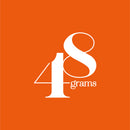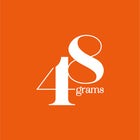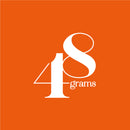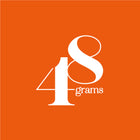Sonnenschutzfaktor – der Faktor, der Leben rettet

Even though the weather is still a bit behind the season - April was too cool and had less sunny days than last year - summer is announcing itself. We at the 48grams editorial team are really looking forward to it. Rhubarb spritzer or even an ice-cold Bellini in the street café (or the beach bar), instead of sweaters and jeans finally a pretty flapper dress and then the warming rays of the sun on the skin. Life can be so beautiful. But unfortunately also short. And that's exactly what this article is about. Anyone who exposes themselves to direct UV radiation must know that their risk of skin cancer increases. Significantly. The head region is particularly affected. 80 percent of all basal cell carcinomas develop on the face or neck. Therefore we dedicate this article to the international day of the sun protection (21 June) and warn: Only those who protect themselves can enjoy the summer without worry.
4,000 deaths from skin cancer
Yes, the fun factor of this post will be limited. But the topic is too important. The forefinger must be raised, the tone forceful. The current figures alone are frightening. According to the AOK (biggest German health insurance company), 230,000 people in Germany contract skin cancer every year. Dermatologists distinguish between three types. The previously named basal cell carcinoma and also the squamous cell carcinoma are the white or light skin cancer. Mostly well treatable. And responsible "only" for one percent of the deaths. However, those who are diagnosed with a so-called malignant melanoma, the chances of survival are significantly lower. This variant has the highest spread rate for metastases. And thus accounts for 75 percent of all deaths. In 2020, a total of 4,000 patients did not survive their disease.
Early detection saves lives
Skin cancer - fortunately rarely a death sentence. Early detection (and that's what matters) ensures that 100 percent of sufferers survive the important 5-year threshold. But only if they are treated quickly. This is by no means an all-clear. Who wants to play Russian roulette with their life?
Vitamin D formation vs skin cancer risk
But why do we get skin cancer in the first place - after all, we all depend on the sun's rays. It is the only thing responsible for our body to form vitamin D. And that is very important for our health. The D vitamin ensures that bones remain stable, and it regulates calcium and phosphate metabolism. A low concentration, on the other hand, increases the risk of cardiovascular problems, neurological diseases and infections. What a contradiction - almost ironic. Because while it only takes a few (direct) minutes of sunlight to stimulate vitamin formation in the skin - equally, everyone is putting themselves at risk for cancer.
Six skin types with different risks
Whereby there are nevertheless clear type distinctions here. Not everyone is at risk to the same extent. In fact, dermatologists distinguish six tissue types. Starting with very light skin (with reddish, red or blond hair) up to dark brown or black skin (and black hair). Those who belong to the light categories (1 - 3) must severely limit their daily sun time. Five to ten minutes maximum - without UV protection. Those who fall into categories 4 to 6 may tan safely for up to one hour. After that, the danger increases exponentially here as well.
The skin does not forget radiation
Unless - and this is what we are getting at - UV protection is applied to all exposed parts of the body. Just one example of why this is so relevant: a study by the Warren Alpert Medical School (Rhode Island) has shown that as few as five(!) sunburns before the age of 20 are enough to increase the risk of skin cancer by 80(!) percent. Important also to know: Who believes, only aching and cancer-red skin is counted as sunburn, is wrong. Even slight redness counts... The fundamental problem is that tissue cells don't forget - they notice, or better, they add up the radiation exposure. The more frequent and long the radiation, the greater the risk.
Light protection 30 allows 300 minutes of sunbathing
So now to the handling of the sunscreen. Because there are many myths and even more mistakes that are made during application. Who knows that the full UV protection begins only about 30 minutes after application. Moreover, the principle that a lot helps a lot actually applies here. Two milligrams of cream per square centimeter should be enough. That corresponds with approximately a coffee cup, which is filled two centimeters high. However, most people apply far too little cream. It is also important to note that UV protection below 30 is not very useful. Because only this makes a sun stay of 300 minutes possible without danger. But: Already after 60 per cent of the time the Federal Office for radiation protection recommends a new cream unit. After that, i.e. after 300 minutes, the skin needs a break of around two hours. Only then - assuming a fresh portion of UV protection - should the sun be allowed to shine on the head or body again. By the way: a factor of 40 or 50 extends the time that direct irradiation is safely possible.
Clouds intensify the rays
Quite a lot of input. We know that. Stay tuned, dear readers. There are a few more vital tips. Because every day is a ray day. That's why sunscreen isn't just a good moisturizer for tissues - it's an everyday protector that needs to be massaged into your face every morning. The reason is simple: even on cloudy days, UV radiation penetrates to the earth. Although a certain percentage is "swallowed", on the other hand the haze can also reflect the rays perfectly and thus intensify them. The second point: Trees or awnings also provide only limited protection, perhaps reducing the radiation by half. But not more.
A reminder to sun worshippers
There's really no need for more reasons for sun protection from a tube of cream, is there? Finally, a word to all sun worshippers: Don't put your life on the line for a little tan. Even though many people look healthier after a vacation, the opposite can happen very quickly. Therefore, one last tip: If you really need a vacation tan for your ego, you should avoid direct sunlight at least between 11 a.m. and 3 p.m.. This is the time when the greatest amount of dangerous radiation hits the earth.














